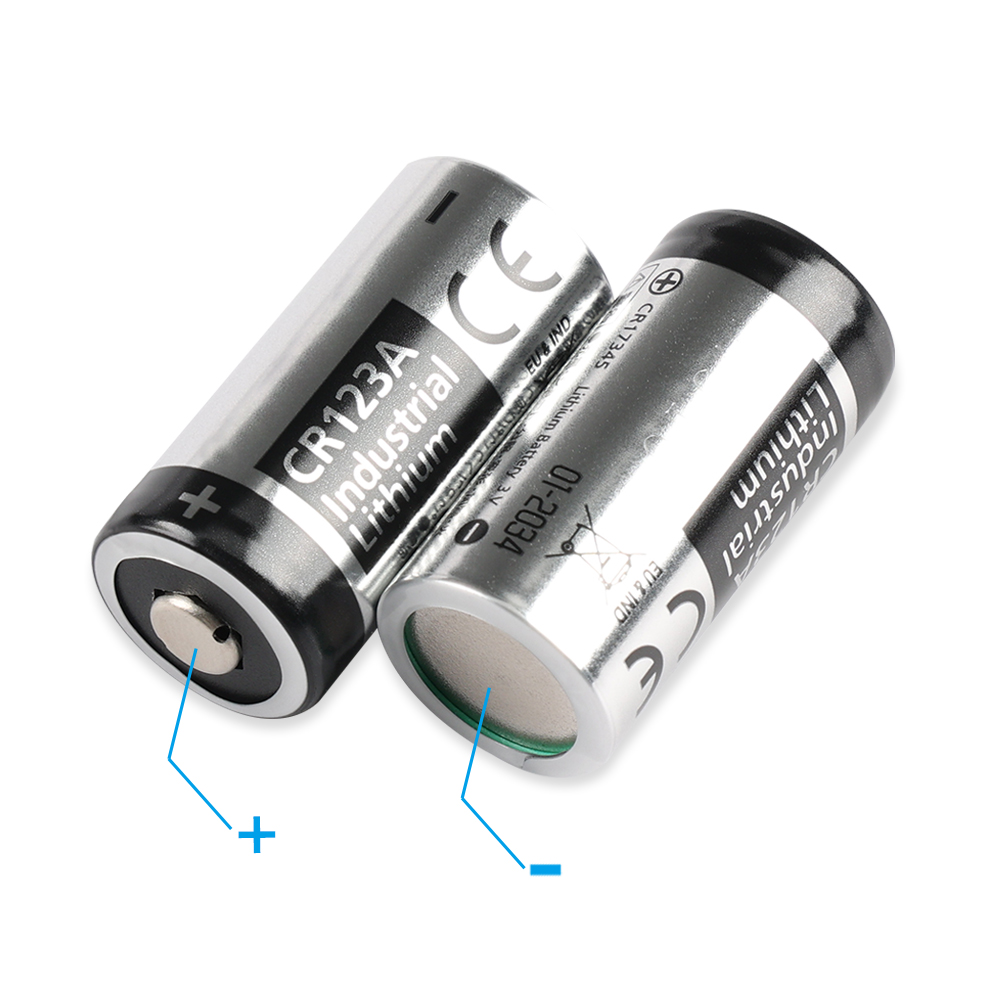The Zoll AED Plus external defibrillator uses 3V No. 123 commercial batteries, each set requires 10 batteries, and a total of 10 batteries are required.
3V 123 lithium battery
3V No. 123 lithium battery, also known as CR123A battery, is a type of cylindrical lithium battery with many excellent properties .
High Voltage
The CR123A has a nominal voltage of 3 volts, which is much higher than the 1.5 volts of a traditional alkaline battery, allowing it to provide a higher power output.
High energy density
CR123A has a higher energy density, 3-10 times greater than non-lithium system batteries . It can store more energy in a smaller volume and is suitable for portable electronic devices.
Low self-discharge rate
The self-discharge rate is low, and the annual self-discharge rate of the battery stored at room temperature does not exceed 2%. After 10 years of storage at 20 degrees, 80% of the capacity is still retained.
Safety performance
CR123A adopts advanced materials and technology, and has passed safety test certifications such as UL , UN38.3 , CE and ROHS . It has good safety and is not prone to explosion or leakage.
Wide operating temperature range
CR123A can work normally in a wide temperature range, laser sealed batteries are -40 to 85 degrees, mechanical sealed batteries are -40 to 70 degrees, adapting to different environmental conditions.

Reasons why ZOLL AED Plus uses 3V AAA lithium battery
Battery specifications adapted to device needs
The design and functionality of the AED Plus requires a battery with specific specifications to support its normal operation. The 3V 123 lithium battery was chosen to meet this requirement, as it can provide a stable power supply to ensure that the defibrillator can work normally at critical moments.
Balance between performance and cost
The choice of 3V No. 123 lithium battery was also based on performance and cost considerations. This type of battery has been proven to provide stable voltage and sufficient power while maintaining cost-effectiveness, making the AED Plus a balance in terms of cost performance.
Demand for battery protection board
Although the voltage of 3V is relatively low, by using a battery protection board, the charging and discharging between multiple batteries can be coordinated to ensure that the service life of the battery pack is extended. This configuration helps to improve the reliability and durability of the device.
Limitations of lithium battery technology
The voltage of lithium batteries is mainly determined by the chemical properties of their raw materials. Common lithium battery types, such as ternary polymer lithium batteries and lithium cobalt oxide batteries, are usually 3.7V, while lithium manganese batteries and lithium iron phosphate batteries are 3.2V. Although multiple cells can be combined in series and parallel to achieve higher voltages, this will increase cost and complexity. Therefore, choosing 3V 123 lithium batteries is also a technical compromise to maintain a balance between cost-effectiveness and equipment performance.
http://CR123 CR123A For ZOLL AED Plus Replacement Batteries 1550mAh 3V-10 Pack
ZOLL AED Battery Calibration
In order to ensure the reliability of the device after the battery is replaced and to protect the success rate of cardiopulmonary resuscitation of the patient, battery calibration should be performed after replacing the new battery.
Calibration Process
AED calibration usually requires professional operation, the specific steps are as follows:
Equipment Inspection
First, check whether the AED has any damage on its exterior, whether the battery is sufficiently charged, and whether the connecting cables are intact.
Performance Testing
Use specialized calibration equipment to perform performance tests on AEDs, including checking key indicators such as charging speed, discharge energy, waveform accuracy, etc. This step usually needs to be performed in a professional laboratory or calibration center of a medical institution.
Data Analysis
Compare and analyze the test data with the standard values provided by the manufacturer to evaluate whether the performance of the AED meets the requirements.
Adjustments and corrections
If the test results show that the AED performance does not meet the standards, it needs to be adjusted or repaired accordingly until the performance returns to normal.
Records and Reports
After the calibration is completed, the calibration process, test results and any adjustments need to be recorded in detail and a calibration report should be generated. This report is an important basis for the subsequent use and maintenance of the equipment.
Calibration frequency
The frequency of AED calibration depends on the model of the device, how often it is used, and how often the battery is replaced. Generally speaking, it is recommended to calibrate at the following time points:
Before first use
Before using an AED for the first time, it must be calibrated to ensure proper functioning of the device.
After battery replacement
Each time the battery is replaced, it should be calibrated to ensure that the performance of the new battery meets the standard.
Regular inspection
It is recommended that AEDs be regularly inspected, including calibrated; the American Heart Association (AHA) recommends that AEDs be calibrated annually.
If this article still doesn’t help your laptop battery, you can buy a new battery at BatteryMall.comIf you want to learn more about batteries, please visit:BatteryMall.com/blogs/support.

